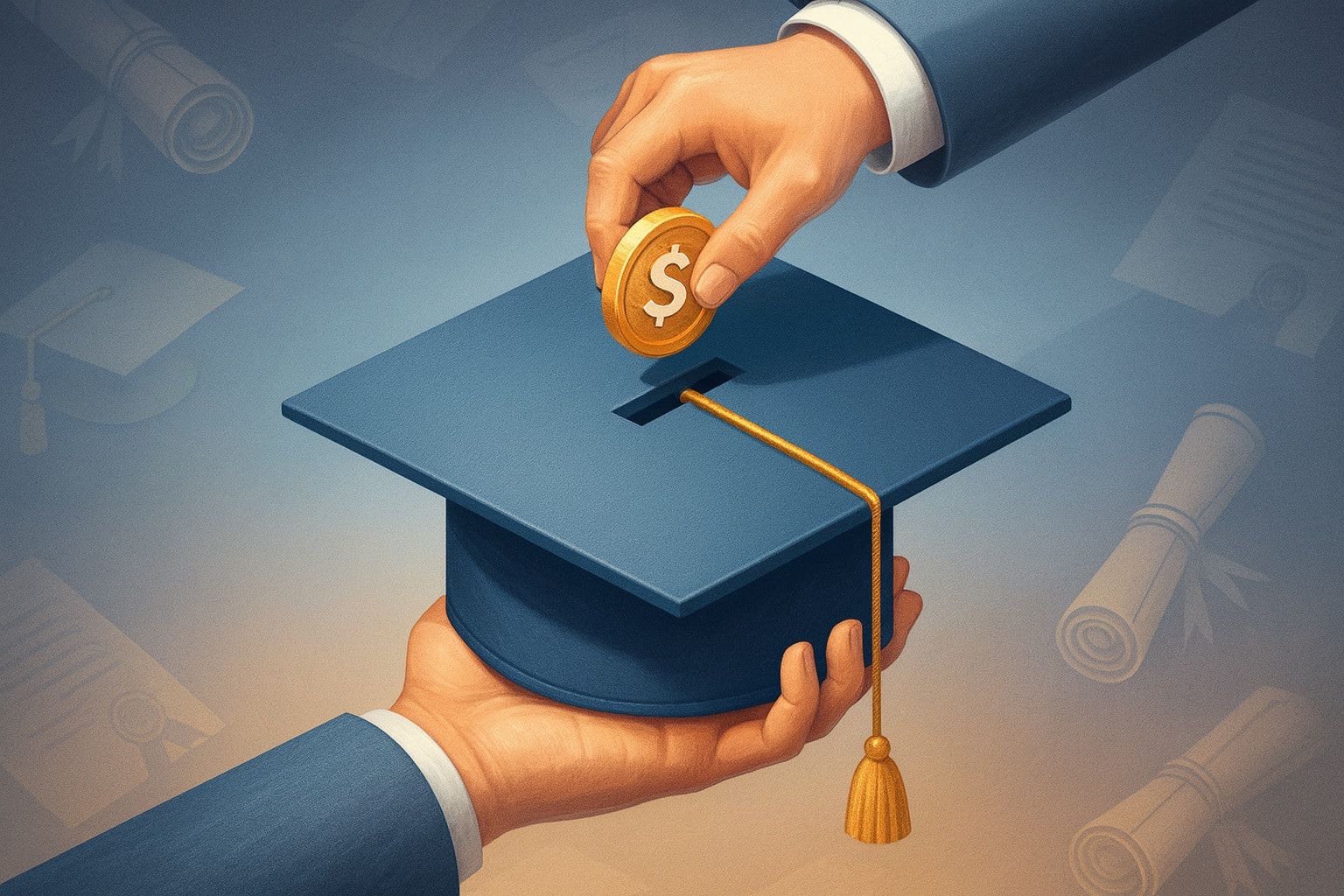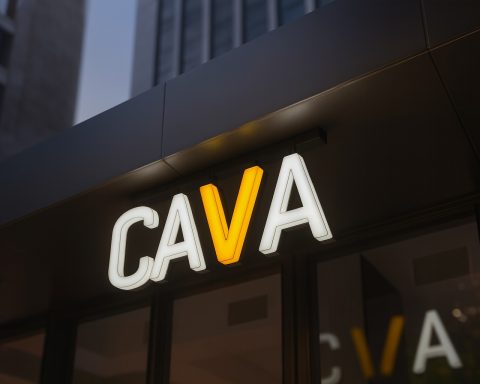A once‑in‑a‑generation overhaul of Australia’s student loan system is finally hitting people’s accounts, with the Albanese Government’s promised 20% cut to all HELP and other study debts officially rolling out from today.
Around 100,000 Australians will see their balances drop this weekend, with about 3 million people set to share in a $16 billion wipe‑out over the next few weeks. [1]
At the same time, a higher income threshold for compulsory repayments has kicked in, meaning many graduates won’t have to start paying back their loans until they earn $67,000 a year, up from $54,435. [2]
What’s happening today?
From this morning, the Australian Taxation Office (ATO) has begun pushing through automatic 20% reductions to eligible student and training debts that existed on 1 June 2025. [3]
Key points for 22 November 2025:
- First wave: About 100,000 people will see their balances shrink from today, with notifications going out by SMS, email or MyGov inbox. [4]
- Three‑week rollout: Roughly 3 million Australians will receive messages over the next three weeks as the ATO processes the full $16 billion debt reduction. [5]
- No application needed: The cuts are automatic – there is nothing you need to apply for or opt into. [6]
Education Minister Jason Clare has described it as the biggest cut to student debt in Australia’s history and says many young Australians will literally hear the relief arrive in their pockets as their phones ping with ATO messages confirming the change. [7]
How the 20% student debt cut works
The change is based on the Universities Accord (Cutting Student Debt by 20 per cent) Act 2025, which passed Parliament earlier this year. [8]
Here’s how the mechanics work:
- The 20% reduction is applied to your study loan balance as at 1 June 2025, before 2025 indexation was applied. [9]
- Indexation for 2025 (3.2%) has been recalculated on the lower, post‑reduction amount, effectively discounting both your debt and part of the indexation you were hit with on 1 June. [10]
- The measure covers not just HECS‑HELP but all major government study loan schemes (more on that below). [11]
This 20% cut comes on top of an earlier move to cap indexation at the lower of inflation (CPI) or wage growth (WPI), a change that already wiped more than $3 billion from student debts and pushed the 2025 indexation rate down to 3.2%. [12]
According to government estimates, all up, the combination of the indexation changes and the 20% reduction will slice around $20 billion from the national student debt pile. [13]
Who is eligible?
If you had Australian government‑backed study debt on 1 June 2025, chances are you’re included.
According to the Department of Education and the Department of Employment and Workplace Relations, the 20% reduction applies to: [14]
- HELP debts, including:
- HECS‑HELP
- FEE‑HELP
- OS‑HELP
- SA‑HELP
- STARTUP‑HELP
- VET Student Loans
- Australian Apprenticeship Support Loans
- Student Start‑up Loans
- Student Financial Supplement Scheme debts
To benefit, your census date for the relevant unit(s) of study must have been on or before 1 June 2025 – but the loan doesn’t necessarily have to have shown up in your ATO account by that date. If the census date was eligible, the ATO will apply the reduction once the provider reports your debt. [15]
How much will people save?
The impact varies depending on how large your loan is, but the savings can be substantial.
From government modelling and ministerial statements: [16]
- Average HELP debt (~$27,600)
- 20% cut ≈ $5,520 wiped from your balance.
- Example large debt (~$46,000)
- 20% reduction ≈ $9,000 off the total – one student profiled in media reports says that makes saving for a first home feel significantly more realistic. [17]
- Someone earning $70,000
- With the new repayment thresholds and rates, the government estimates around $1,300 less in compulsory repayments each year after the reforms, compared with the old system. [18]
For many, the combination of a smaller balance, lower indexation, and higher income threshold means paying off their debt faster and having more disposable income in the short term.
New repayment threshold: who stops paying (for now)?
Alongside the 20% cut, the government has overhauled the repayment thresholds for student loans. [19]
From the 2025–26 financial year:
- The minimum income at which you must start making compulsory repayments rises from $54,435 to $67,000.
- Repayments will be calculated only on income above the new threshold, not the entire taxable income. [20]
That means:
- Some people currently making small repayments may drop out of compulsory repayments entirely.
- Those earning just above the threshold will see much smaller deductions from their pay than they would have under the old settings.
The changes are explicitly framed as cost‑of‑living relief, designed to help people in their 20s and 30s at a time when many are trying to move out of home, start families or save for a first property. [21]
When will the 20% cut show up in my account?
The short answer: sometime between now and early 2026, depending on how straightforward your situation is.
According to the Department of Education and the ATO: [22]
- The ATO has now begun processing reductions, with the first large batch landing today.
- Most people should see their reduced balance before the end of 2025.
- More complex cases – for example, where providers are late reporting data – may not be finalised until early 2026.
You’ll know it has happened because:
- Your HELP/VSL balance in your ATO online services or the ATO app will drop.
- You’ll receive a notification via SMS, email or MyGov inbox confirming the 20% reduction has been applied. [23]
What if I repaid my loan after 1 June 2025?
This is one of the most common (and most frustrating) questions.
The rules are clear: the 20% reduction is calculated on what you owed on 1 June 2025. Any compulsory or voluntary repayments made after that date don’t reduce the size of the discount you’re entitled to. [24]
That leads to two scenarios:
- You still had debt on 1 June 2025 and later paid it off
- The 20% reduction is still calculated based on your 1 June balance.
- If that results in your account effectively going into credit, the ATO can refund the excess after checking whether you owe any other tax or Commonwealth debts. [25]
- You had completely cleared your student debt before 1 June 2025
- You won’t receive any reduction or refund; there is no retrospective compensation for people who finished paying earlier. [26]
That last point has been a major source of anger among graduates who rushed to pay off their HECS before recent indexation spikes, only to find they now miss out on the 20% cut entirely. [27]
What if my debt wasn’t showing in my ATO account by 1 June?
Many students are in limbo because their provider hadn’t yet reported their 2025 study debt when indexation hit. The FAQs from the Department of Education and the DEWR VET team address this directly: [28]
- If your census date for that unit was on or before 1 June 2025, it is eligible.
- The 20% cut will be applied once the debt appears on your ATO account.
- You don’t need to do anything, but you should make sure your provider has correct enrolment data and your ATO/MyGov contact details are up to date.
Units with census dates after 1 June 2025 are not eligible, except in a handful of edge cases where institutions shifted census dates due to public holidays or weekends. [29]
Why is the government doing this now?
This policy has been brewing for more than a year.
The Universities Accord review recommended sweeping changes to higher‑education funding, and the Albanese Government committed at the 2022 election to cut student debt by 20%. [30]
The political and economic backdrop:
- A shock indexation spike in 2023, driven by high inflation, saw student debts jump by over 7% in a single year, triggering widespread anger among graduates and current students. [31]
- Cost‑of‑living pressures, housing affordability and wage stagnation have made large student debts feel increasingly unmanageable, particularly for younger Australians. [32]
- The government has framed today’s rollout as core cost‑of‑living relief, arguing that education “shouldn’t mean a lifetime of debt”, in the words of Prime Minister Anthony Albanese. [33]
In a July joint media release, Albanese and Education Minister Jason Clare said the combination of indexation reform and the 20% cut would reduce close to $20 billion in student debt for more than three million Australians. [34]
Who misses out – and what critics are saying
While today’s news is undeniably big, economists and student advocates have raised concerns about fairness and design.
Key criticisms include:
- A percentage‑based cut favours those with larger debts, often graduates from longer or more expensive degrees such as law, medicine or dentistry. Some experts argue a flat dollar reduction (for example, knocking the same amount off every debt) would have delivered more help to low‑ and middle‑income graduates. [35]
- People who paid off their loans before 1 June 2025 get no benefit, even if they made large voluntary repayments to avoid indexation that is now being partially reversed. [36]
- The changes don’t address the underlying cost of tuition or the way new debt will accumulate for future students, especially if fees continue to rise. [37]
Student groups say today’s changes will help many, but argue there is still a need for deeper reform of university funding, placement availability and upfront costs. [38]
What about a second 20% cut?
One detail in today’s reporting that has grabbed attention is mention of a “second round” of 20% cuts.
Several outlets note that the federal government has flagged plans for another 20% reduction to outstanding student debts by 1 June next year, worth a further $16 billion. [39]
Important caveats:
- This second round is a policy announcement, not yet the subject of detailed legislation or official operational guidance like the current cut.
- The government has framed it as part of an extended cost‑of‑living package and the broader Universities Accord response. Further detail is expected in 2026 Budget and legislative updates. [40]
For now, only the first 20% reduction – the one linked to 1 June 2025 balances – is actually being processed by the ATO.
What you should do today
You don’t need to apply for the 20% cut, but there are a few smart steps to take now:
- Check your MyGov and ATO details
- Make sure your email address, mobile number and postal address are current so you don’t miss the ATO notification. [41]
- Monitor your HELP/VSL balance
- Log in to ATO online services or the ATO app, or check your myHELPbalance portal to watch for the updated figure. [42]
- Update your budget and tax planning
- If the new threshold means you’ll stop compulsory repayments, factor that into your take‑home pay and savings goals.
- If your repayments are shrinking but not disappearing, consider whether extra voluntary contributions still make sense in light of lower indexation and the 20% cut. (If in doubt, seek personal financial advice.) [43]
- Beware scams
- The ATO will never ask for bank details or upfront payments in order to process this reduction. Treat any unexpected calls, emails or texts asking for sensitive information with extreme caution and verify via official ATO channels. (Scam warnings have accompanied previous rebate and refund programs.) [44]
So, what does all this add up to?
For many Australians, today is the first visible proof of a long‑promised reform:
- Balances are falling,
- indexation is lower, and
- repayments are being pushed back for those on modest incomes.
But the relief is uneven. Those with large remaining debts are the biggest winners, while people who paid off their loans earlier – or who never went to university at all – might reasonably feel left out of the windfall. [45]
Whether this marks the beginning of a fairer, more sustainable system or just a one‑off political sugar hit will depend on what happens next: further Accord reforms, any second‑round cuts, and how governments tackle the deeper question of what higher education should cost in the first place.
Disclaimer: This article is general news and information, not financial advice. For advice about your specific circumstances, consider speaking to a licensed financial adviser or tax professional.
References
1. www.9news.com.au, 2. ministers.dewr.gov.au, 3. www.education.gov.au, 4. www.9news.com.au, 5. tanea.com.au, 6. www.education.gov.au, 7. www.9news.com.au, 8. www.education.gov.au, 9. www.education.gov.au, 10. www.dewr.gov.au, 11. www.education.gov.au, 12. www.education.gov.au, 13. www.education.gov.au, 14. www.education.gov.au, 15. www.education.gov.au, 16. ministers.dewr.gov.au, 17. tanea.com.au, 18. ministers.dewr.gov.au, 19. ministers.dewr.gov.au, 20. www.aph.gov.au, 21. www.education.gov.au, 22. www.education.gov.au, 23. www.education.gov.au, 24. www.education.gov.au, 25. www.education.gov.au, 26. www.education.gov.au, 27. www.abc.net.au, 28. www.education.gov.au, 29. www.education.gov.au, 30. ministers.dewr.gov.au, 31. www.abc.net.au, 32. www.abc.net.au, 33. ministers.dewr.gov.au, 34. ministers.dewr.gov.au, 35. www.theguardian.com, 36. www.abc.net.au, 37. www.theguardian.com, 38. www.abc.net.au, 39. www.9news.com.au, 40. www.9news.com.au, 41. www.education.gov.au, 42. www.dewr.gov.au, 43. ministers.dewr.gov.au, 44. www.ato.gov.au, 45. www.theguardian.com









